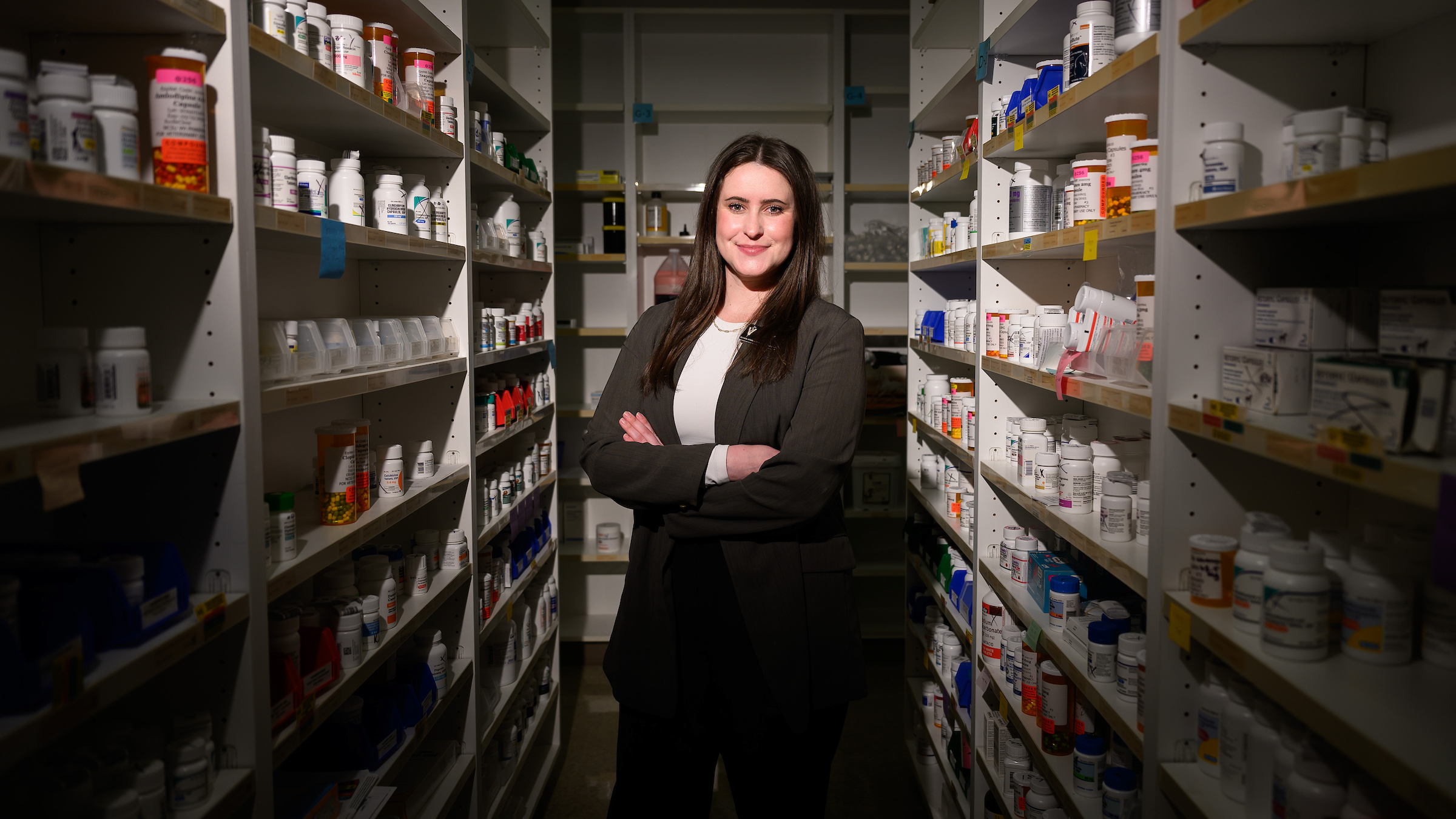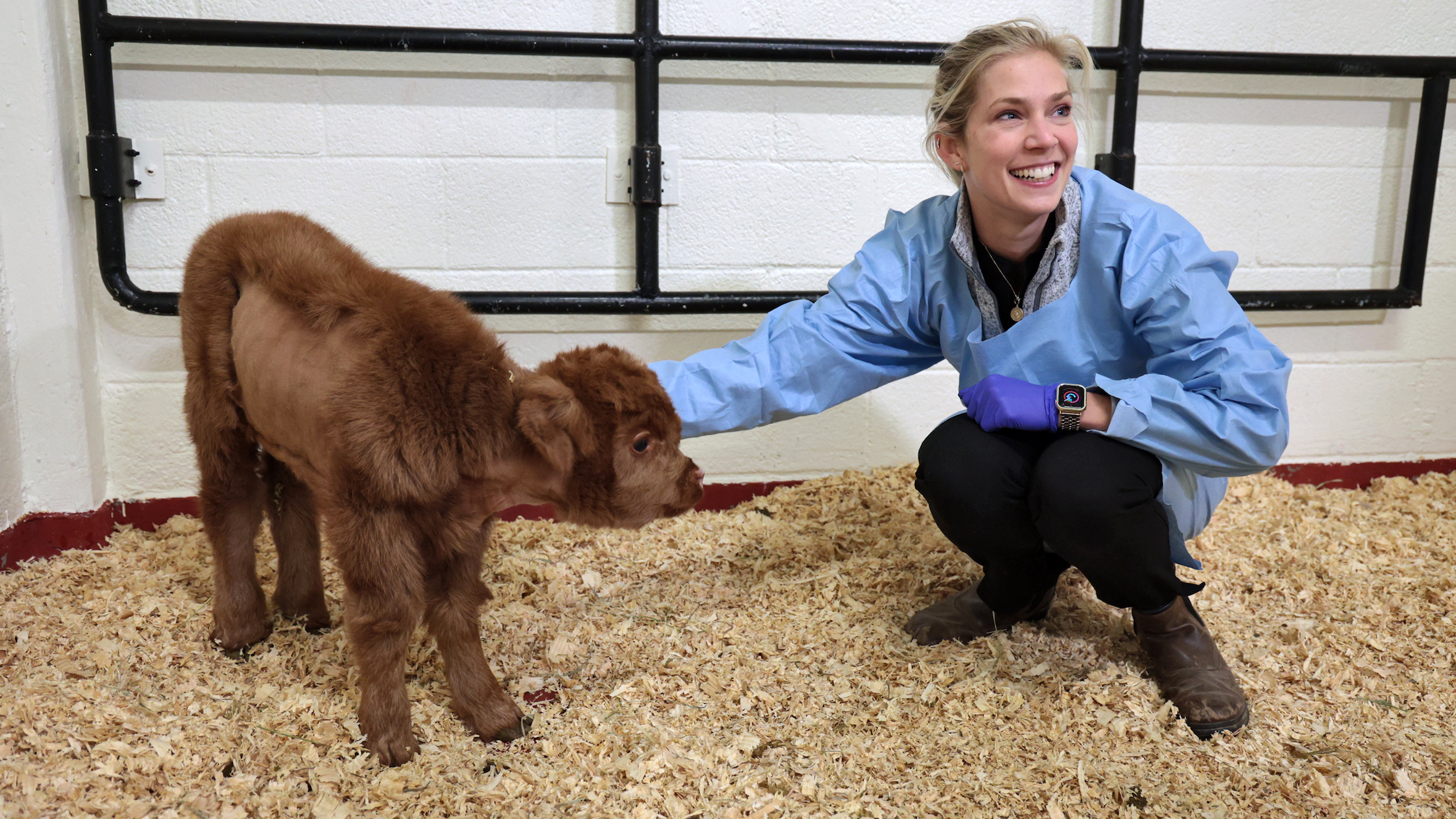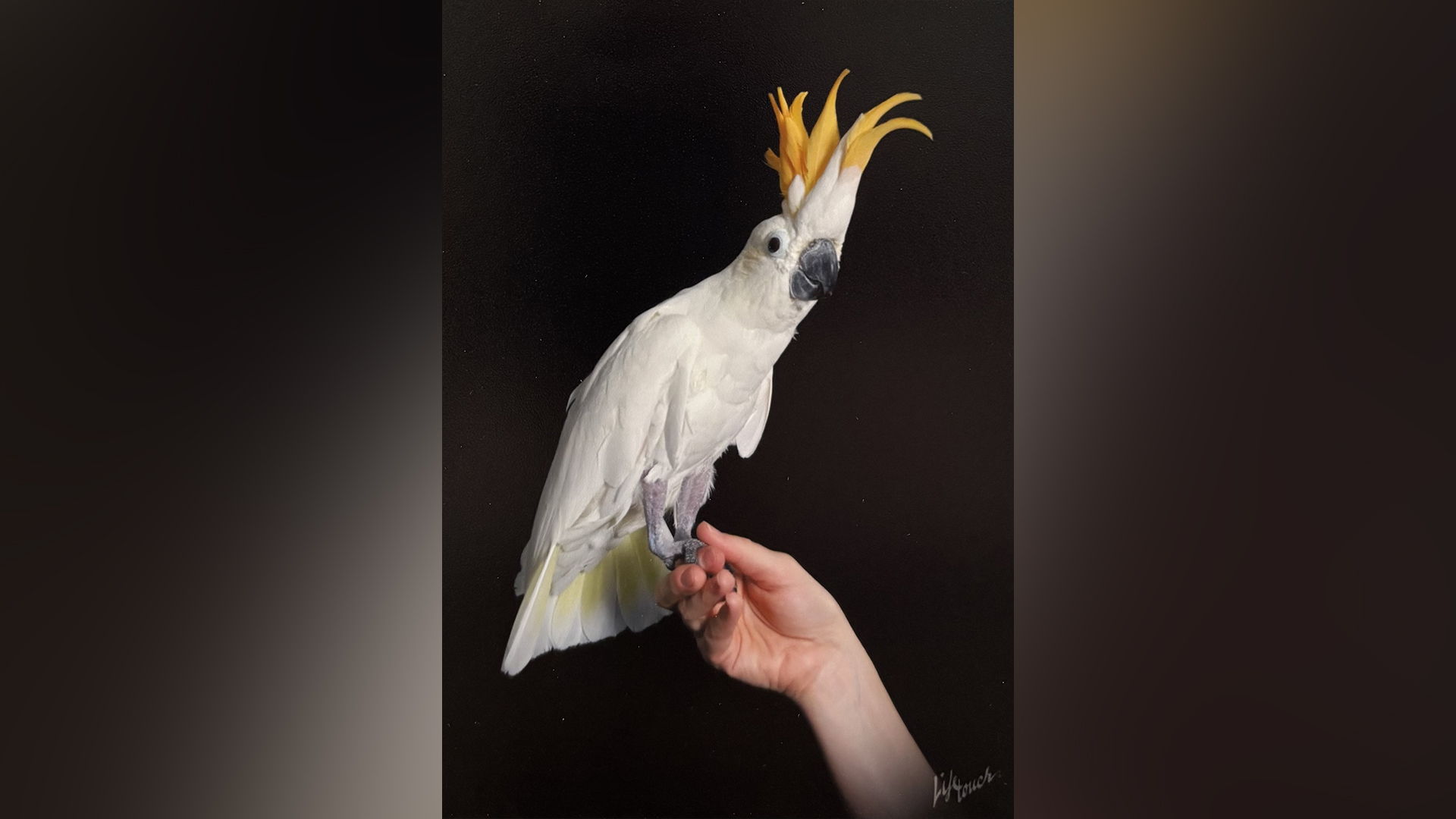Avian Influenza: What North Carolinians Need to Know to Keep Themselves and Their Pets Safe
Wild bird migratory season is approaching, bringing heightened risk for transmission of the emerging H5N1 strain of bird flu. NC State poultry disease expert Dr. Rocio Crespo explains how to stay safe.
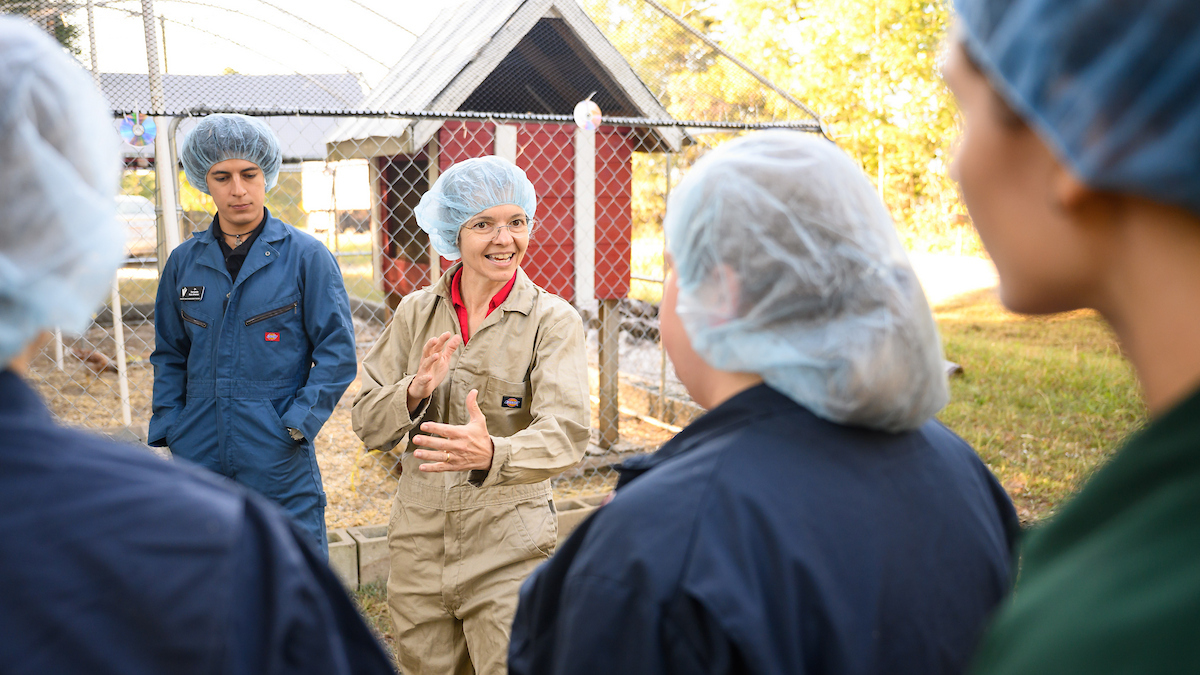
Winter is prime time for respiratory bugs, and this cold and flu season carries new concerns for people and their pets over an emerging pathogen: H5N1 avian influenza, also called bird flu.
This specific strain of bird flu, first detected in 2020 as it spread from wild birds to poultry, has received increased attention over the past year as health authorities identified cases of the illness in dairy cows and sporadic infections in humans. The disease has also sickened or killed dozens of domestic and wild cats in the West and Midwest, United States Department of Agriculture data shows.
In North Carolina, poultry and livestock producers are taking steps to prevent the spread of H5N1 in their animal populations. The general public’s avian influenza risk remains low, says Dr. Rocio Crespo, a professor of poultry health management at the NC State College of Veterinary Medicine who specializes in the development and diagnosis of poultry diseases.
To date, the USDA has tracked 18 outbreaks of highly pathogenic avian influenza in commercial and backyard flocks in North Carolina since 2022, affecting over 3.8 million birds. The state has seen just one H5N1 outbreak in dairy cattle, one infection in a wild animal — a black bear — and no confirmed cases in humans in recent years, according to national dashboards from the USDA and the Centers for Disease Control and Prevention.
As the wild bird migratory season approaches, bringing elevated risk for bird flu transmission, people can take simple steps to protect themselves, their pets and their backyard birds, Crespo says. Here’s what you need to know.
What’s the current status of H5N1 influenza in North Carolina?
Dr. Rocio Crespo: Right now is the time when, in North Carolina, we expect cases to pick up in birds. January and February are when we have the start of the seasonal migration happening here. Most of the migratory birds are going to be near the coast, but of course they will intermingle with other birds that may come more inland. So just because we monitor birds near the coast more closely doesn’t mean that there are not affected fowl near the mountains or as near as Raleigh.
In terms of risk to humans, people should be cautious at this point, but not panic. Most of the people who have been infected have either been in direct contact with poultry or cattle. People in the city have a low chance to contract the virus — if you live in the middle of Raleigh and don’t have a pond, or you don’t go hunting, chances are that you are not going to be exposed to the virus, and even if you are, at this point it’s not passing from person to person.
The other thing is the safety of the food that we consume. This is a very labile virus, so cooking and pasteurization is going to kill it. Don’t consume raw meat or feed it to your pets. Don’t consume raw eggs or raw milk; that’s where we see the virus survive.
How concerned should people be about potential transmission to pets, and what should they do to protect their cats and dogs?
RC: We monitor waterfowl for this virus, because we know those are the natural hosts, but waterfowl can pass the virus on to other bird species, where it can multiply and mutate to spread to other animals and humans.
Often people don’t realize that their outdoor cats could go around and catch infected backyard birds. It’s possible that cats could pick up the virus from wildlife, but animals that are typically allowed outdoors will get very distressed if they cannot be outdoors. You have to balance the welfare of the animal and their risk of getting the disease.
With dogs, it’s easier because they are more trainable and typically go outside on leashes and under supervision. Hunting dogs may hunt sick animals, but in general they are trained not to consume the meat. Don’t let your dog eat wild birds.
If your cat or dog has been outdoors and looks sick, seek veterinary advice as quickly as possible so your veterinarian can rule out highly pathogenic avian influenza. We can use antiviral medications in cats and dogs, and these work better if we catch the infection earlier on. Don’t wait.
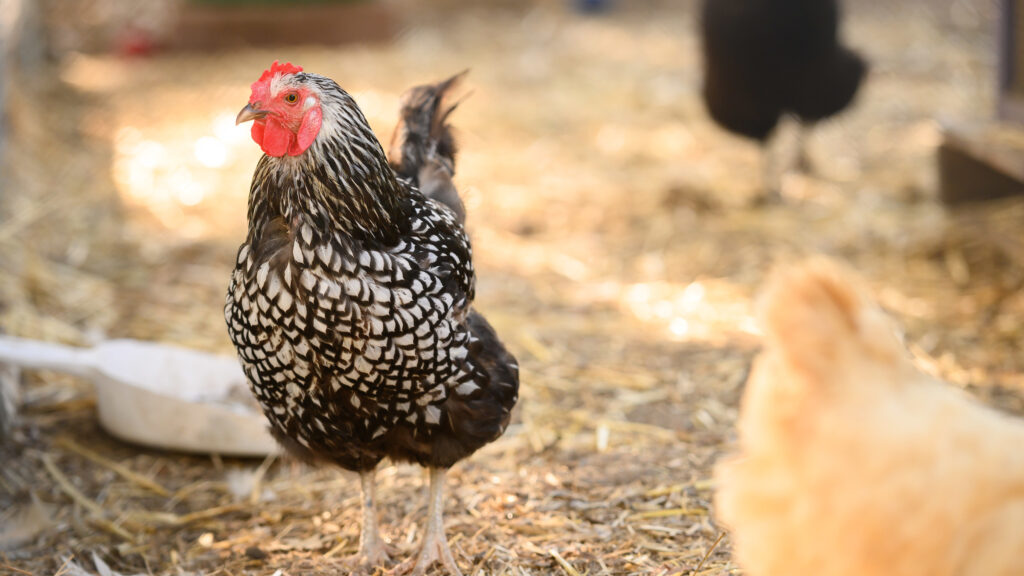
How can people with backyard birds protect their flocks?
RC: Keep your domestic birds away from those migrating waterfowl and wild birds.
If you like to feed the ducks or wild birds, feed them in a different area from where you keep your chickens. Make sure you wash your hands before you handle your backyard birds.
Some poultry owners with larger flocks keep their birds in covered pens so wild fowl don’t have access to them, and that can be an effective way to protect them, too.
How could H5N1 affect poultry production and our grocery carts?
RC: The most significant direct effect to us could be the price of the poultry products. It may not be just this year; it may be in the years to come. It depends at what level the virus affects which producers. We’re very lucky with [State Veterinarian and former College of Veterinary Medicine faculty member] Dr. Mike Martin here in North Carolina. He’s a poultry specialist.
We haven’t seen the prices of eggs go high here, because our major productions in North Carolina are meat-producing broilers and turkeys. Future egg prices will depend on other states’ production — in California, their major migration season just finished, and Midwestern states have their migration at the same time as ours or a little bit later.
Out of all the poultry commodities, broilers are the ones least affected because they have a shorter time to contract the virus. Turkeys have also been affected by H5N1 and are susceptible, so their prices could increase.
What is the College of Veterinary Medicine’s poultry team doing to help monitor cases of bird flu across the state?
RC: Commercial poultry operations have what we call the National Poultry Improvement Plan, which tracks biosecurity and disease prevention on farms. I’m working with Dr. Gustavo Machado [NC State associate professor of emerging and transboundary diseases] and different poultry farms statewide to standardize and strengthen their biosecurity plans and make recommendations for those national poultry safety guidelines.
What we’re trying to do is create virtual models of the disease and provide various tools that may be able to predict more easily where gaps and strengths exist in these producers’ biosecurity plans. In collaboration with partners at the University of California, Davis, we’re also looking at wild bird data and hope to model where these wild birds are going in relation to our farms to predict the chances of an outbreak.
We started this project last year. Now, we’re finishing up with a couple companies and entering their data, so soon we’ll be able to use that information to model the virus’ path at these farms.
This conversation has been edited and condensed for clarity.
